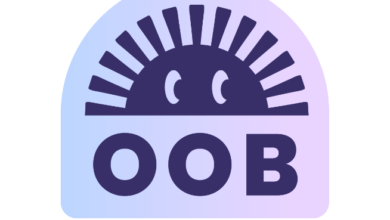Collaborative Writing Made Easy: Best Apps for Remote Writing Teams

The dynamic rise of remote work has transformed how teams collaborate, especially in writing projects. Whether creating marketing content, writing a book as a group, or working on a shared document, collaborative writing tools have become an essential addition to the arsenal of remote writing teams. These tools streamline workflows and keep communication efficient. Here’s a roundup of the best collaborative writing apps.
-
Google Docs
Google Docs remains one of the most widely used and popular collaborative writing tools. It offers real-time collaboration, allowing multiple users to edit a document simultaneously. Each contributor’s changes are reflected instantly, and who made the changes can be easily tracked by their colored cursor and username. Furthermore, the chat function facilitates team discussions, and the comment threads can be used to provide feedback. Google Docs has a robust version history that can help revert changes if required.
What’s more, you ask? It is a cloud-based structure, making the documents accessible on any device with Internet access. Although it is a Google product, it is considered one of the best writing apps for Mac users.
| Pros | Cons |
| Facilitates real-time collaboration and users can use tags, comments, and typing indicators to share feedback | Limited formatting options for complex projects |
| Grammatical errors can be avoided by using Google’s assistive features like Smart Compose | Relies heavily on Internet connection |
| The documents can be downloaded in different formats, such as PDF, OpenDocument Format, Plain Text, Web Page, etc. | Limited selection of templates |
| Offers cross-platform compatibility | |
| Free to use with a Google account. |
-
Dropbox Paper
Dropbox Paper is a collaborative tool ideal for teams working on brainstorming, content development, and research. It combines a user-friendly, minimalist interface with robust collaboration features, allowing remote writing teams to work on a shared document simultaneously. Its real-time editing features allow users to see who is making the changes, and users can even assign tasks or leave comments within the document.
| Pros | Cons |
| Rich media integration, allowing teams to embed videos, images, and even design prototypes within the document, making it a great tool for multimedia-heavy projects | No built-in spell checker or assistive writing features |
| Integrates with Dropbox to let teams seamlessly access other files related to the project without leaving the application | Limited offline access |
| Tasks can be assigned within the documents | Limited formatting options |
| User activity can be tracked and monitored |
-
Quip
Quip by Salesforce is a collaborative platform that combines spreadsheets, documents, and communication in one place. It allows teams to work on spreadsheets or text documents simultaneously and integrates a chat feature to facilitate communication within the app.
Quip’s features are designed to streamline workflows for remote writing teams. They include collaborative checklists, inline comments, and a task-tracking system. For businesses already using Salesforce, Quip seamlessly integrates into their daily operations.
| Pros | Cons |
| Combines spreadsheets, documents, and chat in a single platform | Limited outside integrations |
| Facilitates real-time collaboration and integrates with Salesforce | Paid subscription required for unlocking advanced features |
| Custom notifications so teams can stay on top of the changes made in the documents | |
| In addition to sharing individual files with a link or by email, Quip lets users share entire folders with one or more people. |
-
Zoho Writer
Zoho Writer is part of the Zoho Office Suite and is a fully featured word processor with collaborative capabilities. It allows remote teams to work on documents simultaneously, track changes, leave comments, and chat within the document. The app’s interface is minimal and clean, making it easy for teams to focus on their content without distractions.
Zoho Writer seamlessly integrates with other Zoho products, making it an excellent tool for teams using Zoho Projects or Zoho CRM for task management.
| Pros | Cons |
| Cross-platform compatibility | Limited integrations with third-party applications |
| Advanced document access controls, such as specifying who can manage permissions to the document, setting an expiration date for file access, turning off collaboration temporarily, sharing a document publicly but requiring password, etc. | Paid subscription required for unlocking advanced features |
| Seamless integration with other Zoho apps and user-friendly interface |
-
Scrivener
Scrivener is well-known among writers for its ability to handle long-form writing projects like scripts, books, and research papers. Although it is not inherently a collaborative tool, it can be made collaborative by syncing with cloud services like Google Drive or Dropbox. This allows multiple team members to access and work on the same document, although not simultaneously and in real-time. However, the app does come with basic collaborative features like commenting and a revision mode, which does not require syncing with cloud services.
The app’s strengths lie in its organizational features, allowing writers to break projects into smaller sections, store notes and research, and rearrange them easily within the same interface.
| Pros | Cons |
| Feedback to documents can be given using comments and inline notes | Not designed for real-time collaboration |
| Keep track of changes by enabling revision mode | |
| Syncs with Google Drive or Dropbox for collaboration |
So, these are a few apps you can add to the toolkit of your remote writing team. These apps will facilitate collaboration and boost productivity.


